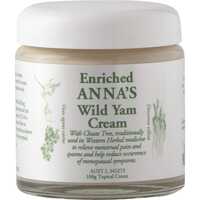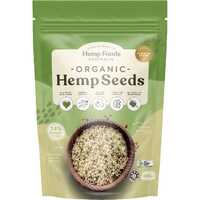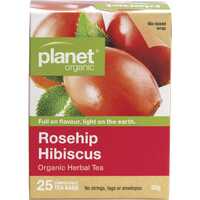Tea is the most popular beverage in the entire world. This aromatic drink is produced by pouring hot water over dried or fresh leaves. This simple act brings out a variety of flavours and personalities, from bitter to sweet and stimulating to relaxing. Along with inner warmth and varied taste sensations, the teas of the world have long been consumed for health reasons. When combined with a healthy diet and exercise regime, a nice cup of tea can help to energise the body, quiet the mind, and connect the spirit.
Let's review the history of tea, look at the many types of teas, and analyse the health benefits associated with the world's most beloved hot beverages.
A Brief History of Tea
Like many other things in human civilisation, the history of tea begins in ancient China. The story of tea began in 2737 BC when the leaves of a Camellia sinensis plant accidentally fell into a hot water drink made for Chinese emperor Shen Nung. As a renowned herbalist, the emperor was brave enough to try the infusion and the rest is history. While this story is likely to be pure legend, it highlights the extensive history of tea drinking in China.
After many centuries of harvesting and consuming tea, the drink was introduced to travelling Japanese monks who brought it back home. Tea drinking became a vital part of Japanese culture, with the Tea Ceremony ritual described in the Ch'a Ching and still carried out to this day. Tea arrived in Europe much later, first via Portuguese traders and missionaries who were living in the far east. The Dutch were the first Europeans to ship tea commercially, with the drink becoming popular among wealthy classes and slowly spreading across the continent.
The British were rather slow to adopt tea, or what was called 'China drink' or 'Tcha' at the time. The first coffee house was established in London in 1652, but even then, tea was far from the main attraction. Tea finally hit the main stage when Charles II married Catherine of Braganza, who was a Portuguese princess and notorious tea addict. Tea became fashionable almost overnight, first among the upper classes and then among commoners when the tea tax was reduced in 1784. The growing popularity of tea had an influence on colonialism and global commerce, as the East India Company spread its wings beyond China to India, Sri Lanka, and Southeast Asia.
The leaves of the Camellia sinensis plant are not the only way to make tea, however, with cultures all over the world having steeped a huge variety of plant materials over thousands of years. Herbal caffeine-free teas date back to ancient Egypt, southern Africa, and the Americas, along with almost every other culture on planet Earth. During the early days, before the development of teas based on Camellia sinensis, these drinks were known as herbal infusions. Traditionally consumed for medicinal reasons rather than taste, many of these infusions have become extremely popular in modern western society.
Common Tea vs Herbal Tea
When introducing tea into your daily routine, it's important to understand the difference between common Camellia sinensis teas and herbal teas. While the former are produced from a single plant, the later refers to a huge variety of plants. Common tea is sometimes called true tea, and depending on how it's harvested and prepared, it's also called black tea, green tea, or white tea. In contrast, herbal tea is an umbrella term used to describe a huge variety of herbal infusions produced by steeping a wide array of plant parts. While beverages based on Camellia sinensis always use the leaves of the plant, herbal teas can also use fruits, roots, and bark, among other plant parts.
Common Camellia Sinensis Teas
Not all Camellia sinensis teas are the same, with black, green, and white varieties all in existence. While they come from the same plant, they offer different taste profiles and nutritional benefits based on how the leaves are picked and processed.
- Black tea is the most popular by a wide margin, including famous varieties like English Breakfast and Earl Grey. When black tea is made, the leaves undergo a natural enzymatic oxidation, which changes their colour from green to brown.
- Green tea is renowned for its health benefits, many of which are based on its high antioxidant content. With green tea, there is no complex oxidation process needed. Green tea was around at the beginning, and it's getting more popular all the time.
- White tea is an increasingly popular choice, thanks to its delicate flavour and high antioxidant content. White tea is the least processed and most refined of the Camellia sinensis teas, as it uses unopened buds from new tender shoots.
What is Oolong Tea?
Oolong tea deserves special mention, as it's an exotic tea based on the Camellia sinensis plant. Oolong tea is a traditional Chinese tea that combines the qualities of dark and green teas through a special process of oxidation. Special preparation methods and partial oxidation give this tea a unique flavour and nutrient profile. Oolong tea contains several vitamins, minerals, and antioxidants, including tea polyphenols like theaflavins, thearubigins, and EGCG. It also contains L-theanine, an amino acid known to have a positive effect on relaxation and cognitive performance.
Popular Herbal Teas
There are many herbal teas on the market, made from a variety of ingredients and produced in all corners of the world. There are a huge array of flavours and aromas available, from stimulating early morning drinks to relaxing late-night brews. Let's take a look at some of the most popular herbal teas in the world.
Chai tea
'Chai' is simply the Indian name for tea, so 'chai tea' is a somewhat redundant name still in wide use. Also known as Masala chai, this delicious beverage has gained worldwide popularity. Chai is a spiced tea blend that includes ginger, cardamom, cinnamon, nutmeg, and cloves. Milk is normally added; honey is widely used for sweetening; and other spices like star anise, fennel seeds, peppercorn, and vanilla are sometimes included. Many of these herbs have a stimulating effect on the digestive and nervous systems.
Peppermint tea
Peppermint tea has a spicy minty flavour with hints of pepper and a little sweetness. This popular herbal tea has a number of antioxidant, antibacterial, antiviral, and anticancer properties. Peppermint tea includes peppermint oil, which has a positive influence on the digestive system. Consuming this tea may help with nausea, stomach pain, and indigestion. Peppermint oil is also effective at relieving symptoms of irritable bowel syndrome.
Rosehip tea
Rosehip tea comes from the fruit of the rose plant. Known as 'rose hips', this plant material is very high in beneficial plant compounds and vitamins. Rosehip tea has a number of anti-inflammatory properties, which make it potentially useful for the treatment of osteoarthritis, rheumatoid arthritis, and inflammatory bowel disease. According to one study, rosehip extract may even be a good candidate for preventing obesity.
Rooibos tea
Made from the leaves of the red bush plant, rooibos tea is a beloved drink in South Africa. While there is currently little scientific research on its effects, this tea has shown promise for the treatment of allergies and kidney stones. Rooibos tea may also have a positive impact on heart health by causing blood vessels to constrict in a similar way to some blood pressure medication.
Echinacea tea
Echinacea is loved the world over for its ability to reduce inflammation and boost the immune system. Echinacea tea is a simple way to consume this popular herb, which can also be found in tablets, supplements, and tinctures. Echinacea plants contain caffeic acid, alkamides, phenolic acids, rosmarinic acid, and polyacetylenes, among other compounds. According to a review from 2015, echinacea can help to significantly reduce the risk of recurrent respiratory tract infections.
Chamomile tea
Chamomile tea is one of the world's most relaxing and popular herbal drinks. Long used as a traditional folk remedy, the flavonoids in this tea offer a range of health benefits. Chamomile tea can help to reduce menstrual cramps and pain, prevent blood sugar from rising, and reduce inflammation. It may also help to slow or prevent osteoporosis, and it may even have some cancer-fighting properties. Chamomile is available by itself as a delicious tea, and it's regularly included in tea blends for its relaxing properties.
Passionflower tea
If there's anything more relaxing than chamomile tea, it would have to be passionflower tea. Native Americans used this herb to treat a variety of conditions, with Spanish explorers learning about passionflower from the native Peruvians and spreading it around the world. Passionflower has been shown to calm the mind and induce healthy sleep patterns, and it may also help with the treatment of generalised anxiety disorder. Passionflower works by increasing gamma-aminobutyric acid (GABA) levels in the brain, with this naturally occurring amino acid responsible for relaxation, mood, sleep, and pain relief.
If you're looking for a new source of delicious and nutritious tea products at a great price, Healthy Being is here to help. We have a wide selection of classic and herbal teas to choose from, from stimulating early morning brews to relaxing late-night potions. So browse our website today and discover the amazing world of tea!


 Certified Organic
Certified Organic Vegan Friendly
Vegan Friendly  Vegetarian
Vegetarian Organic Ingredients
Organic Ingredients Dairy Free
Dairy Free Gluten Free
Gluten Free Keto Friendly
Keto Friendly


































